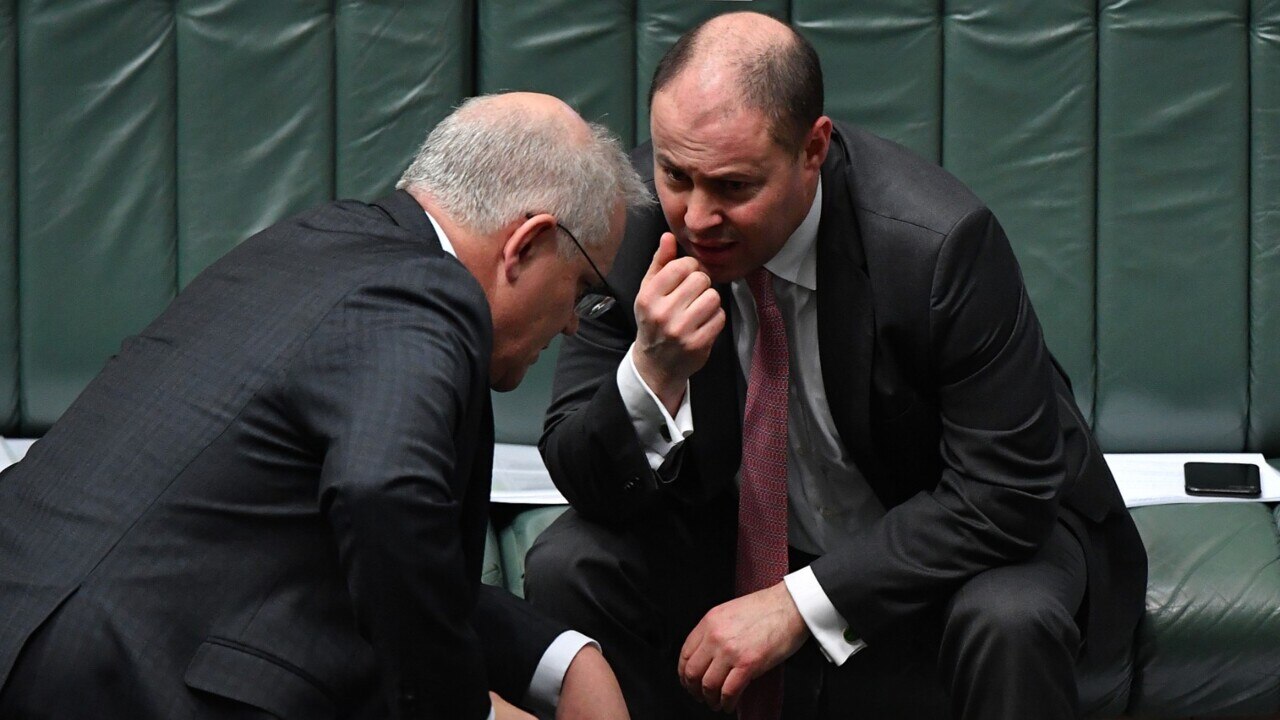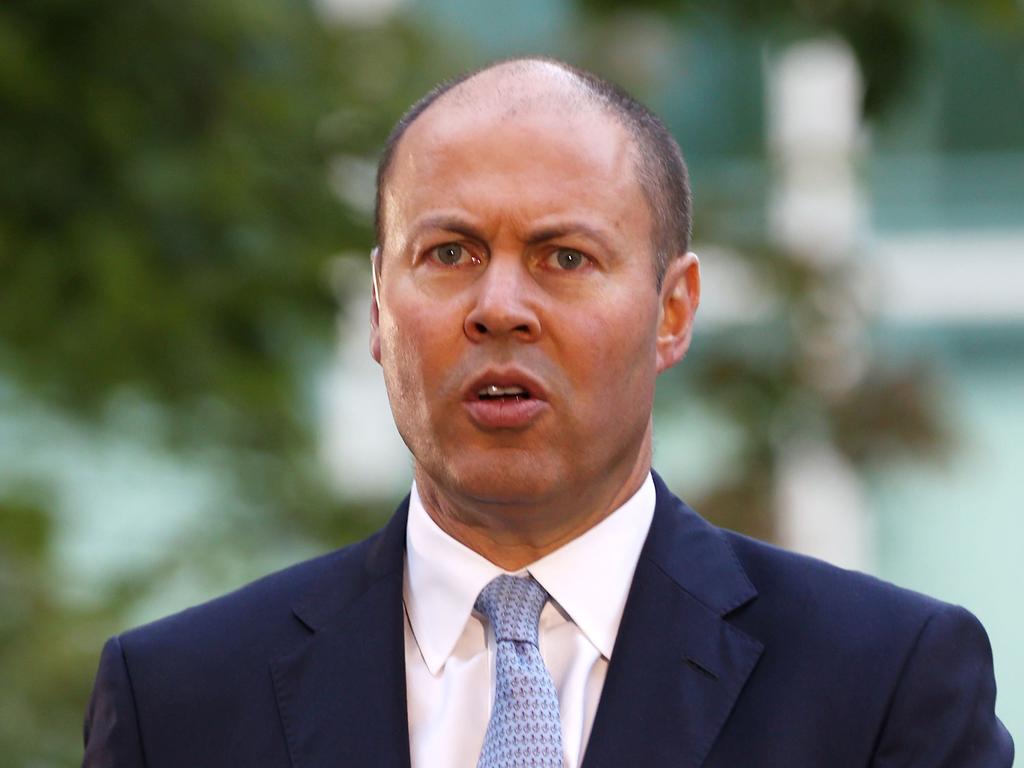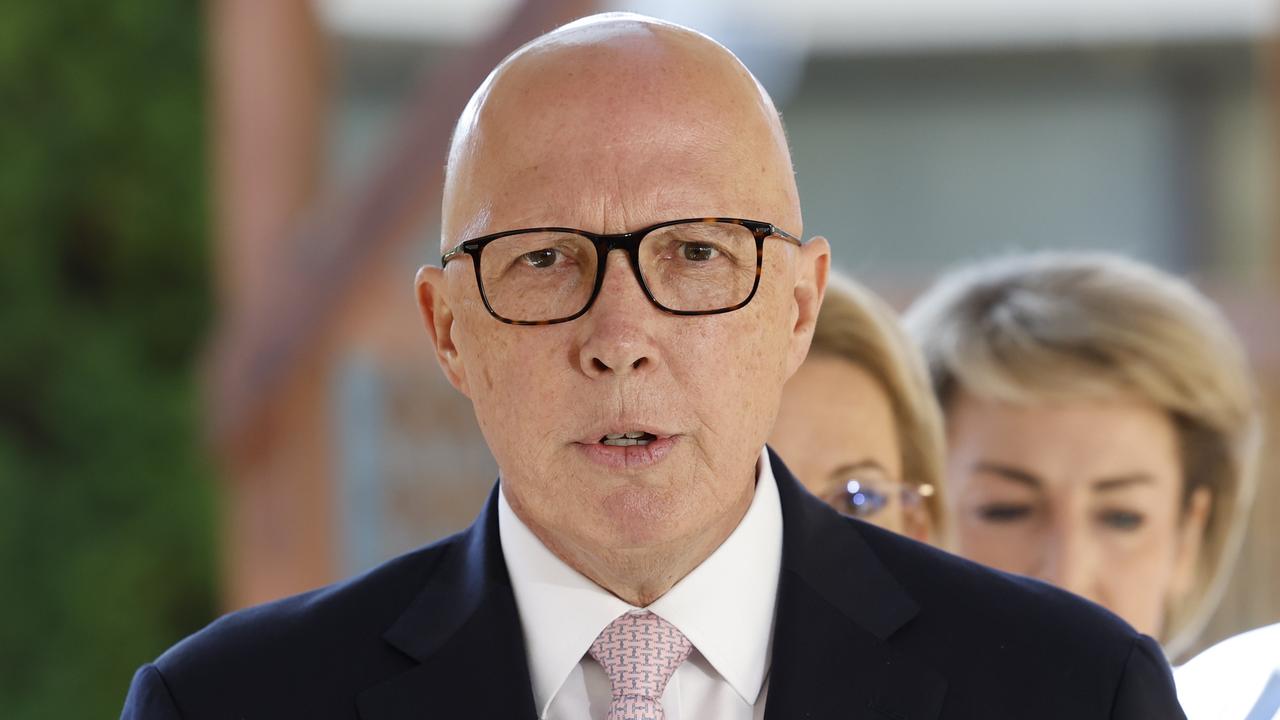Budget to drive jobless rate lower as austerity rejected
Josh Frydenberg has enshrined an unemployment rate of less than 5 per cent at the heart of fiscal strategy.

Josh Frydenberg has enshrined an unemployment rate of less than 5 per cent at the heart of the government’s fiscal strategy, pushing back the task of serious budget repair to beyond 2022 and squashing fears that the rapid recovery could trigger a turn towards “austerity”.
The swift labour market rebound has outpaced even the most optimistic forecasts in September when the Treasurer set the target of reducing the jobless rate to “comfortably” below 6 per cent as a condition for repairing the budget.
Economists now predict the jobless measure will drop to 5 per cent by the end of 2021 after falling to 5.6 per cent in March, with Mr Frydenberg using a speech in Canberra on Thursday to reframe his budget objectives.
“We need to continue working hard to drive the unemployment rate lower. That is what (the May 11) budget will do,” he will say.
“We won’t be undertaking any sharp pivots towards ‘austerity’.
“We want more people in jobs and in better paying jobs. This is what our fiscal strategy is designed to achieve.”
Mr Frydenberg’s commitment to keep the fiscal taps open for longer came as inflation data released on Wednesday suggested that the era of ultra cheap money would remain in place for years to come, ensuring fiscal and monetary authorities would work in tandem to transition the economy from recovery to expansion.
The March quarter consumer price index fell to 0.6 per cent from 0.9 per cent in the final three months of 2020 despite surging house prices and reports of labour shortages in sectors such as hospitality and construction.
Economists said the data showed that despite the rapid recovery from the COVID recession there was little evidence of inflationary pressures that could threaten the RBA’s prediction that rates would need to stay at virtually zero until 2023 “at the earliest’’.
The Treasurer on Thursday will quote new Treasury research suggesting unemployment would likely need to fall below 4.5 to 5 per cent before inflation and wages growth accelerated. “In effect, both the RBA and Treasury’s best estimate is that the unemployment rate will now need to have a four in front of it to deliver this outcome,” Mr Frydenberg will say in the pre-budget speech.

RBA governor Philip Lowe has suggested the jobless rate may need to drop even further to below 4 per cent.
Treasury sources said the updated strategy would not involve an explicit target of 4.5 per cent, but the government would be mindful of putting the economy on a path to achieve similar levels of unemployment before beginning to rein in spending.
“I want to be very clear; this government’s core values have not changed. We remain committed to lower taxes, containing the size of government, budget discipline and guaranteeing the delivery of essential services,” Mr Frydenberg will say.
EQ Economics managing director Warren Hogan said the lack of inflationary pressures “shows you that low rates and easy money are pushing asset prices up and doing very little to push up consumer prices”.
Thanks to the pace of the labour market rebound, the federal budget bottom line will be tens of billions of dollars better off than had been expected as recently as December. Economists predict Mr Frydenberg on budget night will unveil a $50bn improvement to the $198bn deficit for 2020-21 forecast in the mid-year economic and fiscal outlook.
Some analysts have suggested the strength of the recovery could help erase the deficit by as soon as the middle of the decade.
Quoting Treasury analysis, Mr Frydenberg will say that the 200,000 more workers in March than anticipated in MYEFO equates to nearly $3bn less paid in direct income support and, on average, $2bn in extra tax receipts each year. “That is around a $5bn turnaround to the budget. And these are just the direct effects. The indirect effects of a stronger economy and more people in work go well beyond this,” Mr Frydenberg will say.
Nevertheless, supporting the economy through the pandemic has come at an enormous cost.
While the government has refocused its efforts on strengthening the economic recovery, new data from the Parliamentary Budget Office showed the burden of paying for emergency COVID support would extend to the next generation. The analysis showed it would take until 2055 before commonwealth debt as a proportion of GDP returned to its pre-COVID level of 30 per cent.
Debt is forecast to peak at over 50 per cent of GDP in coming years, the highest level since World War II, according to the PBO analysis. Despite the higher for longer debt profile, annual interest costs of servicing the debt will remain contained at 1-1.5 per cent thanks to lower longer term bond rates, it said.
Mr Frydenberg will also use his speech to highlight how lower borrowing costs have translated into the country being able to sustain higher levels of debt.
“Treasury’s projections are that nominal economic growth will exceed the nominal interest rate for at least the next decade. That is, economic growth will more than cover the cost of servicing our debt interest payments,” he will say. “By growing our economy, we can maintain a steady and declining ratio of debt to GDP over the medium term as we continue to move towards balancing the budget. Looking further ahead, our challenge once we recover from this crisis is to again rebuild our fiscal buffers. We have done it before, we will do it again.”







To join the conversation, please log in. Don't have an account? Register
Join the conversation, you are commenting as Logout